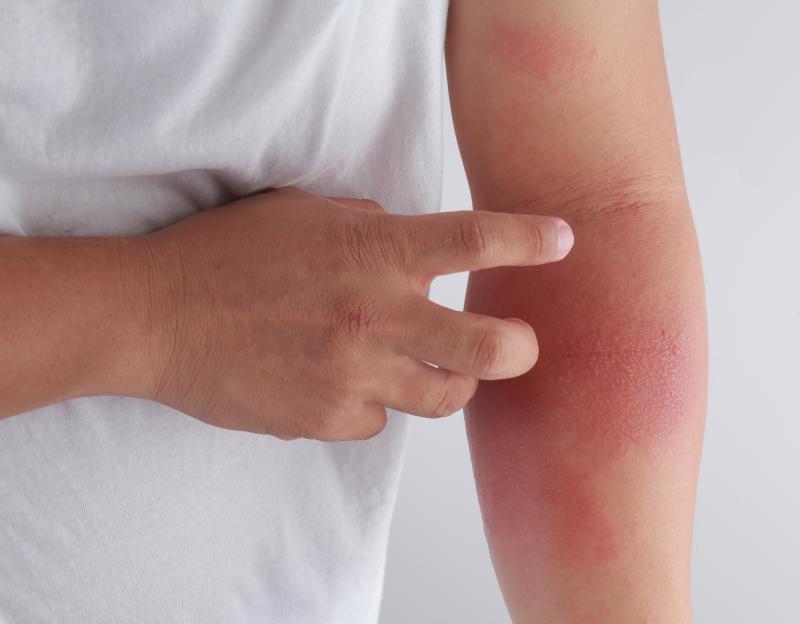
Treatment with the selective inhibitor of Janus kinase 1 and 2 ruxolitinib leads to quick and stable improvements in atopic dermatitis (AD) symptoms, reports a recent phase II study.
Researchers enrolled 307 adult AD patients with mild or moderate disease, affecting 3–20 percent of the body surface area. Participants were randomly assigned to ruxolitinib (1.5% twice-daily, 1.5% once-daily, 0.5% once-daily and 0.15% once-daily), triamcinolone cream (0.1% twice-daily for 4 weeks, then vehicle for the next 4 weeks) or vehicle. Mean change in the Eczema Area and Severity Index (EASI) was the primary outcome.
All concentrations of the ruxolitinib cream resulted in significant EASI improvements at weeks 2, 4 and 8, with efficacy increasing over time and with higher concentrations.
In particular, the 1.5% ruxolitinib cream delivered twice-daily provided significantly better symptom relief at week 4 as compared with the vehicle treatment (71.6 percent vs 15.5 percent; p<0.0001). Both once- and twice-daily applications of 1.5% ruxolitinib also demonstrated numerical advantage over triamcinolone at week 4, though statistical significance was not achieved.
Moreover, 1.5% ruxolitinib twice-daily led to a greater reduction in itch numerical rating scale scores relative to the vehicle. This effect achieved significance as early as within 36 hours of treatment initiation (change, –1.8 vs –0.2 points; p<0.0001) and persisted over the remaining 12 weeks of treatment.
Ruxolitinib also proved to be safe, triggering no clinically significant application-site reactions. Three patients discontinued the trial due to treatment-emergent adverse events that were ultimately deemed unrelated to the event. One had been given 0.15% ruxolitinib, one vehicle and the final triamcinolone. All treatment-related adverse events were mild or moderate in severity.